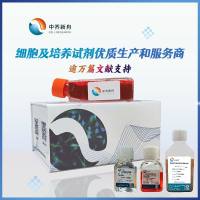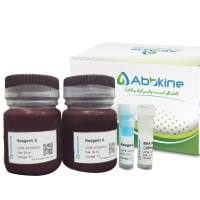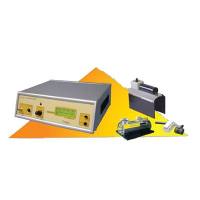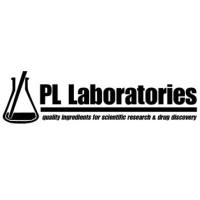【共享】端粒长度的定量测量
丁香园论坛
1970
端粒长度的测量方法,是通过实时荧光定量PCR进行的,希望对做端粒的同行有所帮助!
文件613k,无法上传,贴前言来共享吧。
INTRODUCTION
The traditional method of measuring telomere length in
samples of total human genomic DNA determines a mean
terminal restriction fragment (TRF) length (1). The method
requires large amounts of DNA (0.5–5 μg/individual) and time
(3–5 days). Furthermore, the relative mean TRF lengths of
individuals can vary by as much as 5% depending on the
particular restriction enzymes used, suggesting the existence of
subtelomeric restriction site polymorphisms and/or subtelomeric
length polymorphisms that may confound the identification of
primary factors accounting for inter-individual variation in the
mean length of the true telomeric repeat sequence. More
recently, methods have been developed that allow multiple
samples to be compared for their relative content of just the
telomeric hexamer repeat itself (2–5). However, none of these
methods is as simple and as amenable to rapid high throughput
processing of large numbers of samples as the method
presented below.
Our strategy for determining relative telomere lengths by
quantitative PCR was to measure, for each DNA sample, the
factor by which the sample differed from a reference DNA
sample in its ratio of telomere repeat copy number to single
copy gene copy number. This ratio should be proportional to
the average telomere length. The quantity of telomere repeats
in each experimental sample was measured as the level of dilution
of an arbitrarily chosen reference DNA sample that would
make the experimental and reference samples equivalent with
regard to the number of cycles of PCR needed to generate a
given amount of telomere PCR product during the exponential
phase of PCR amplification. Similarly, the relative quantity of
the single copy gene in each experimental sample was
expressed as the level of dilution of the reference DNA sample
needed to match it to the experimental sample with regard to
the number of cycles of PCR needed to generate a given
amount of single copy gene PCR product during the exponential
phase of the PCR. For each experimental sample the ratio
of these dilution factors is the relative telomere to single copy
gene (T/S) ratio. Thus T/S = 1 when the unknown DNA is
identical to the reference DNA in its ratio of telomere repeat
copy number to single copy gene copy number. The reference
DNA sample (to which all of the experimental samples in a
given study are compared) can be from a single individual or it
can be a pooled sample from multiple individuals. The T/S
ratio of one individual relative to the T/S ratio of another
should correspond to the relative telomere lengths of their DNA.
文件613k,无法上传,贴前言来共享吧。
INTRODUCTION
The traditional method of measuring telomere length in
samples of total human genomic DNA determines a mean
terminal restriction fragment (TRF) length (1). The method
requires large amounts of DNA (0.5–5 μg/individual) and time
(3–5 days). Furthermore, the relative mean TRF lengths of
individuals can vary by as much as 5% depending on the
particular restriction enzymes used, suggesting the existence of
subtelomeric restriction site polymorphisms and/or subtelomeric
length polymorphisms that may confound the identification of
primary factors accounting for inter-individual variation in the
mean length of the true telomeric repeat sequence. More
recently, methods have been developed that allow multiple
samples to be compared for their relative content of just the
telomeric hexamer repeat itself (2–5). However, none of these
methods is as simple and as amenable to rapid high throughput
processing of large numbers of samples as the method
presented below.
Our strategy for determining relative telomere lengths by
quantitative PCR was to measure, for each DNA sample, the
factor by which the sample differed from a reference DNA
sample in its ratio of telomere repeat copy number to single
copy gene copy number. This ratio should be proportional to
the average telomere length. The quantity of telomere repeats
in each experimental sample was measured as the level of dilution
of an arbitrarily chosen reference DNA sample that would
make the experimental and reference samples equivalent with
regard to the number of cycles of PCR needed to generate a
given amount of telomere PCR product during the exponential
phase of PCR amplification. Similarly, the relative quantity of
the single copy gene in each experimental sample was
expressed as the level of dilution of the reference DNA sample
needed to match it to the experimental sample with regard to
the number of cycles of PCR needed to generate a given
amount of single copy gene PCR product during the exponential
phase of the PCR. For each experimental sample the ratio
of these dilution factors is the relative telomere to single copy
gene (T/S) ratio. Thus T/S = 1 when the unknown DNA is
identical to the reference DNA in its ratio of telomere repeat
copy number to single copy gene copy number. The reference
DNA sample (to which all of the experimental samples in a
given study are compared) can be from a single individual or it
can be a pooled sample from multiple individuals. The T/S
ratio of one individual relative to the T/S ratio of another
should correspond to the relative telomere lengths of their DNA.









